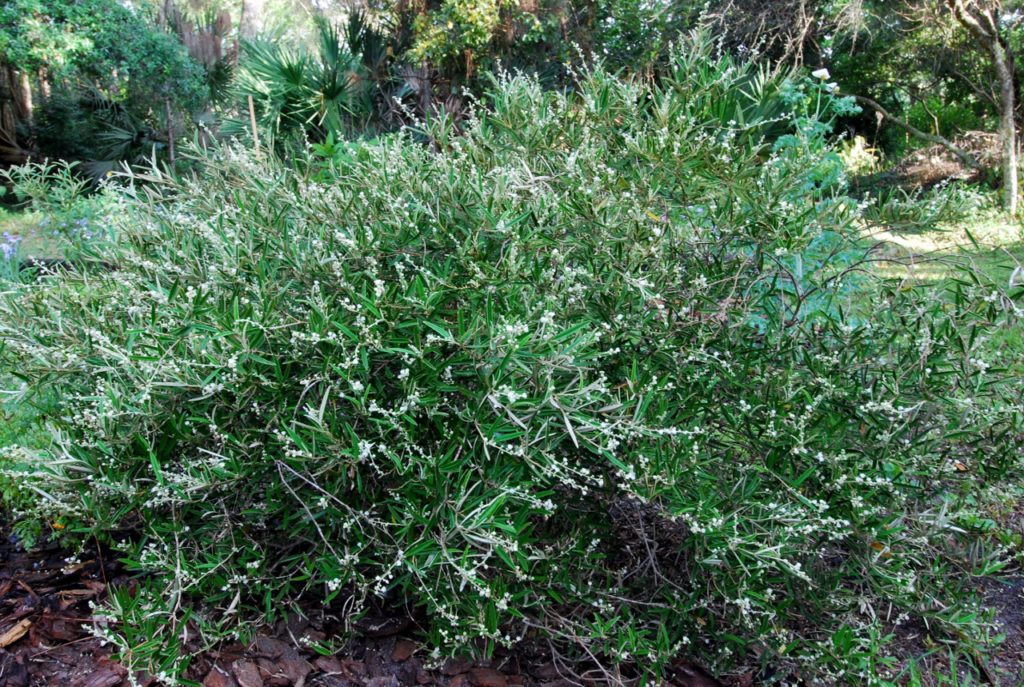
Pineland Croton
Croton linearis
Pineland Croton is also called Grannybush. It can be found naturally in the lower Keys up to Big Pine Key. Then the Rocklands of Dade County, including Longpine Key, and sparingly up to St. Lucie County. I have found it within Juno Hills preserve about 200 feet from the ocean protected from salt air and water by other hammock species.
This is an attractive round shrub with linear leaves that can vary in size up to two inches long and a half inch wide. The top of the leaf is dark green and the underside is silvery. Three feet is the common height, yet some may reach six feet.
Each plant is either male or female. The female flowers have a small nub of a fruit and almost no petal. These develop into a three parted, quarter inch round pod that throws the seeds several feet away when ripe.
This plant needs full sun and dry soil with only a moderate amount of organic matter and nutrients. You will also notice some seedlings coming up near the parent, if you have male and female plants together. You can dig up and move the young plants and expect them to survive for at least ten years.
The rare Florida Leafwing butterfly and Bartram’s Scrub Hairstreak use this plant as a larval food. The flowers of the male plant especially attracts many kinds of butterflies and other insects. This is a must in the background of a sunny butterfly garden. Do not let children chew on the seeds, this is related to Castor Bean.
Pineland Croton is a great plant to add to a pineland or back of the dune beach planting. Try mixing with Beach Sunflower, Spiderwort, Coontie, Spiderlily, Necklacepod, Gaillardia, Beach Elder, Sea Lavender, Bay Cedar, Horizontal Cocoplum, Inkberry, Beach Verbena, Seaside Joyweed, White Indigoberry and other beach plants.
Pine Rockland plants to mix include Silver Palm, Slash Pine, Saw Palmetto, Chapman’s Cassia, Coontie, Key Thatch and many more.